
Celebrating 7 years of The Narwhal — and gearing up for the next 7
Between a fresh take on engagement and our new life on video, our team is...
Get the inside scoop on The Narwhal’s environment and climate reporting by signing up for our free newsletter.
The village of Kiix̣in was built to face the heavens. Standing between mossy ancient forests and the vast expanse of the Pacific Ocean, Kiix̣in (pronounced kee-hin) was the capital of the Huu-ay-aht First Nation, whose members lived on the rugged edge of what is now called Vancouver Island. They lived there for more than 5,500 years, until the end of the 19th century.
Today, the skeletal remains of the village’s longhouses — remnants of massive carved pillars and doorways, now entwined with the roots of spruces towering overhead — reveal the close connection between the Huu-ay-aht people and the skies above them. The archway of the big house was oriented toward the three stars of what many call the Big Dipper, explains Qiic Qiica (Robert Dennis Jr.), a knowledge keeper and cultural ambassador for the nation. “The stars represent all points in time,” he says: past, present and future.
Like their neighbouring Indigenous communities, Huu-ay-aht was a nation of ocean voyagers who travelled and traded widely. “The sea was our highway,” Qiic Qiica says, and the skies were the road map. They marked the changes in seasons, harvests and natural cycles. Sailors navigated by the stars, while whalers used them to determine when to hunt.
“Think about what teenagers do — sneaking out at night to go to a skate park or a party,” Qiic Qiica says. “Well, we would sneak out and go down to Pachena Bay beach at night, just so we could watch the stars.” On a clear night, the sky dances with light, every bit as lively and lush as the sea below.
The skies overhead are just as starry as they were when Qiic Qiica was a kid climbing over his roof to gaze at them; in his lifetime, he says, it hasn’t changed much at all. That makes Huu-ay-aht the rare exception on a continent that is getting more saturated with artificial light every year.
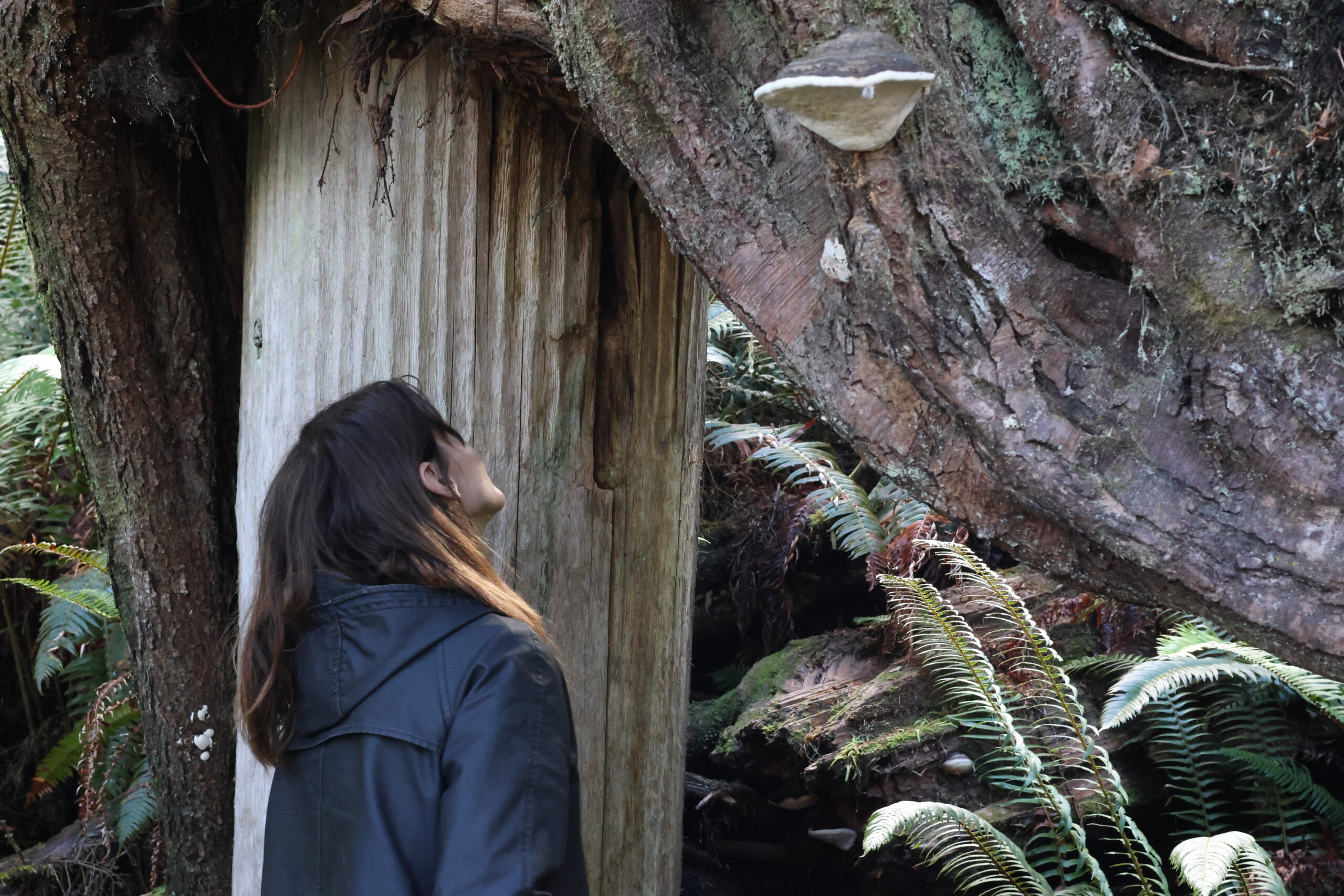
Artificial lighting has only been around for around 150 years; before that, we slept each night under radiant, undimmed skies. In the 1970s, astronomers first began raising the alarm about the interference of brightening skies on their research. Today, you don’t need a telescope to see the impact. Just look up at night from any city or town in Canada, where only a faint smattering of stars can be seen among the thousands of satellites now criss-crossing the night. As of 2016, 80 per cent of North Americans could no longer glimpse the Milky Way. Since then, the night sky has doubled in brightness as a result of artificial lighting. Each year, the light pollution grows thicker, like smog.
Huu-ay-aht wants to protect its stars. The nation is developing a dark sky festival, one it hopes will bolster economic development, preserve astronomical traditions and draw attention to our endangered, irreplaceable view of the stars.
Located 300 kilometres northwest of Victoria, B.C., Huu-ay-aht First Nation is a member of the Nuu-chah-nulth Tribal Council. The first ancestors of the nation came down from the heavens: Nutchkoa, the first man, and Ho-miniki, the first woman, who was born from the moon. Twelve-metre-tall cedar carvings of Nutchkoa and Ho-miniki welcomed visitors to Kiix̣in until they were taken without permission from the abandoned village in 1911; the captive ancestors now greet visitors to the Royal BC Museum in Victoria.
The heart of their homeland is Pachena Bay, a scenic coastal enclave. Three hundred and twenty-five years ago, their Pachena Bay village, Anacla, was devastated by a tsunami after a mega-earthquake (a historic record confirmed by western scientists and researchers centuries later.) Soon after, colonizers arrived, bringing diseases. By the 19th century, an estimated 90 per cent of Huu-ay-aht members had died.
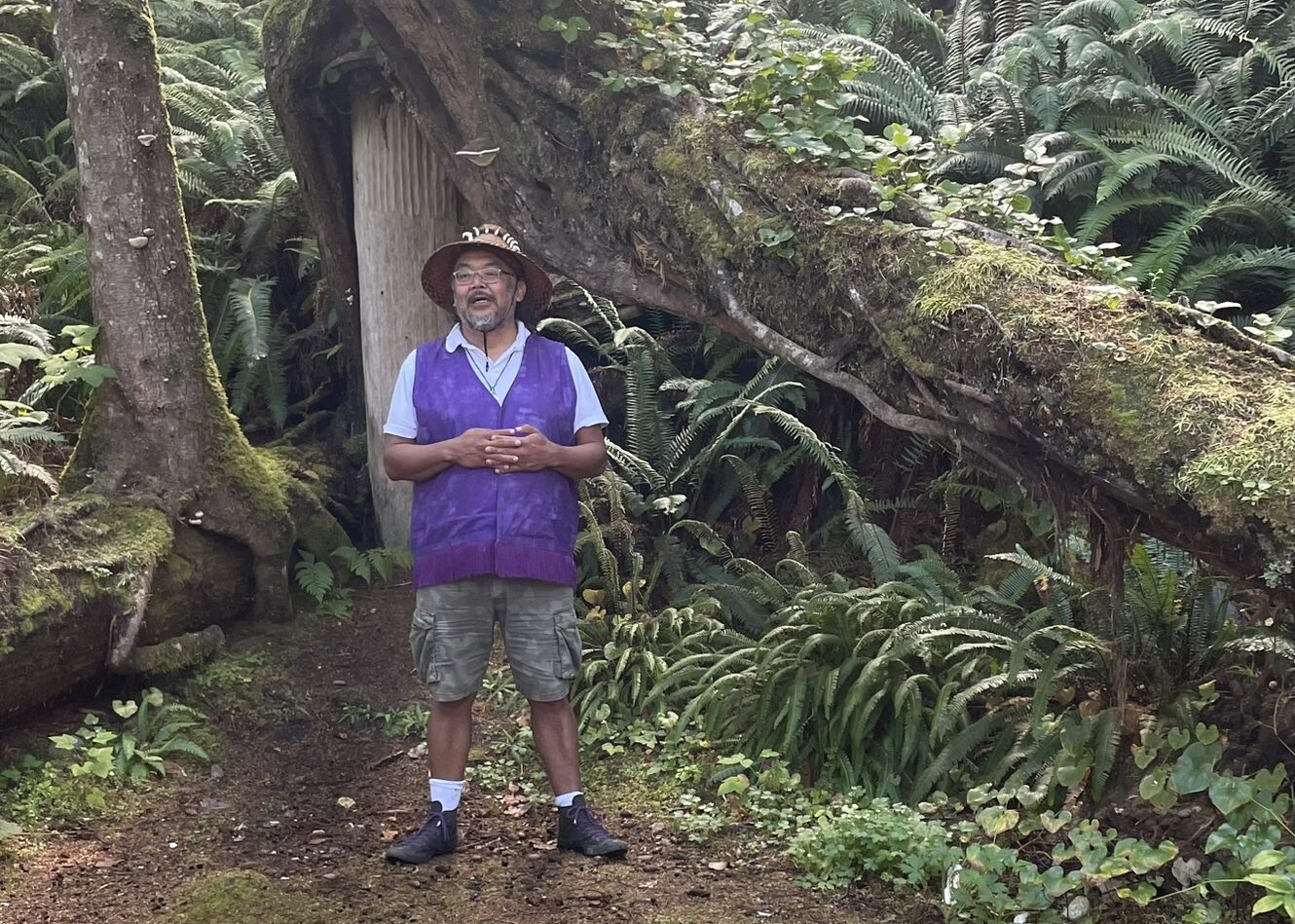
Like many First Nations decimated by colonization, Huu-ay-aht is working to protect and restore the knowledge, traditions and language of the nation. Among those are the stories and legends of the night skies, passed down across generations. Qiic Qiica learned them from his grandfather, Art Peters, and now shares them as a tour guide, leading visitors along a winding trail through the verdant rainforest and across the beach to Kiix̣in, which is recognized as a national historic site. “A big part of what I talk about as a tour guide is our connection to the stars, and to the night sky,” he says.
The nearest town to Kiix̣in, 15 minutes up Pachena Road, is Bamfield: a tiny community of roughly 200 residents cleaved by an inlet. The east side is home to an inn, a market and the renowned Bamfield Marine Sciences Centre. On the west side, reachable only by boat, a smattering of restaurants, businesses and residences are tucked into the trees above a wooden boardwalk. Water taxis ferry passengers across the inlet, advertising their services on hand-painted signs. Other signs caution visitors and residents alike of their proximity to tsunami zones and evacuation sites.
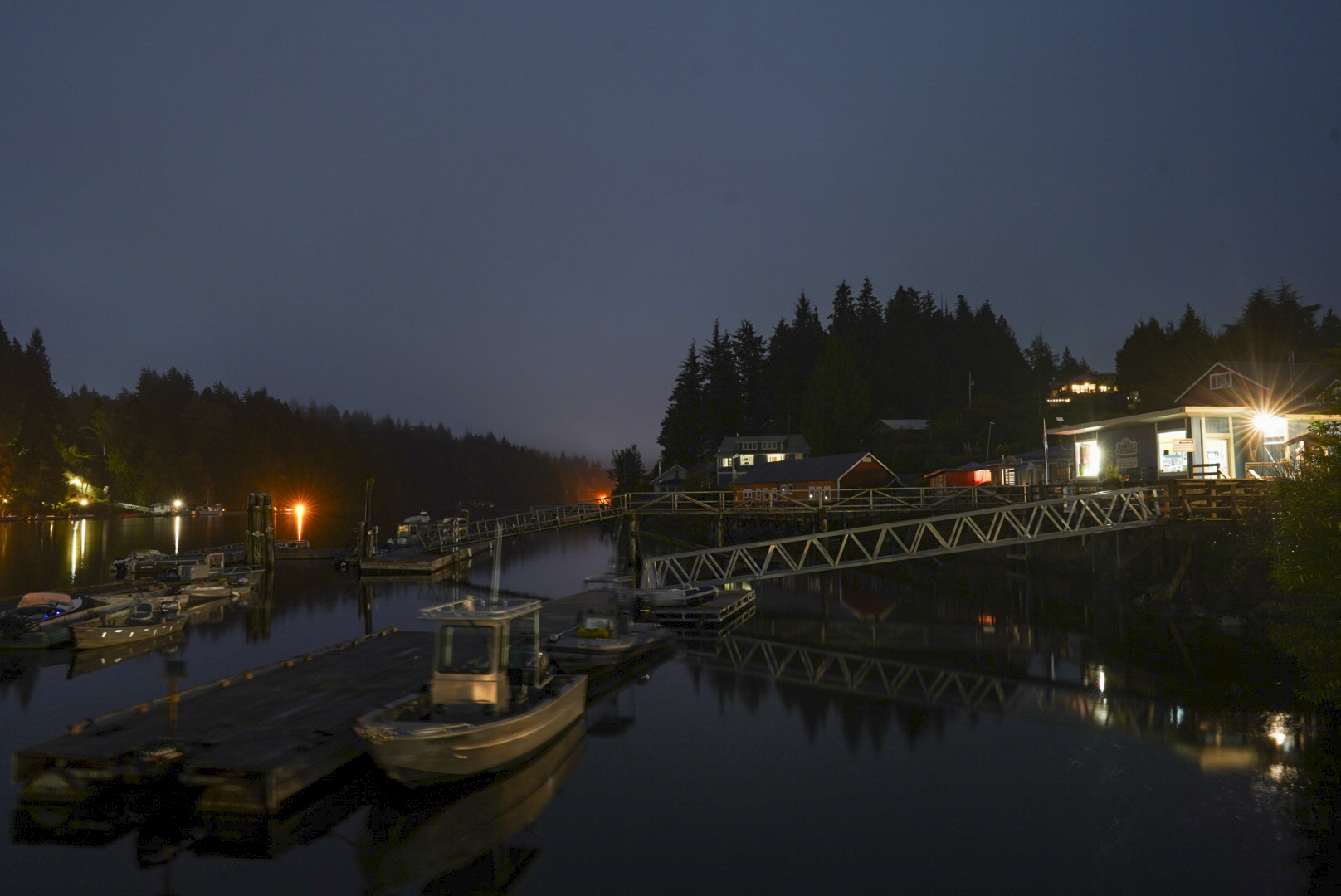
Until recently, Bamfield could only be accessed by two winding gravel roads, but in 2023 — following a devastating bus crash in 2019 that took the lives of two university students — the route from Port Alberni was paved.
That new road has transformed access to the community and brought a swelling number of campers, fishers and day-trippers to Huu-ay-aht territory.
Patrick Schmidt, the chief executive officer overseeing the business arm of the Huu-ay-aht First Nation, calls the new road an economic catalyst — particularly outside the summer months. “From an economic development perspective, we’re looking for ways to expand tourism,” he says. With access taken care of, they just need to give people a reason to visit in the shoulder seasons.
“Tofino has storm-watching,” Schmidt says. “But we have darker skies.”
Indigenous nations across what’s now called Canada all have their own cosmologies. Wilfred Buck, a Cree astronomer, grew up under the northern lights in Opaskwayak Cree Nation, in Treaty 5 territory in Manitoba. In a video with the Manitoba First Nations Education Resource Centre, Buck says that in Cree, they’re called cîpiyak nîmehitowak, which means “the spirits are dancing.”
What some call the Big Dipper and Huu-ay-aht calls the Three Stars, Buck calls mista muskwa — the Big Bear. As an educator, he tells the legend of mista muskwa, who was chased off the land and into the heavens by seven birds.
Buck has written about the significance of learning Cree astronomy after being taught the constellations as they were identified in ancient Greece. “As children, the stories of Orion the Hunter and the Great Bear were presented to our impressionable young minds as knowledge given from great cultures; no other alternative viewpoints were presented,” he wrote. “Such experiences left me with the impression that my people were not smart enough to have such perspectives as those that can be associated with the heavens.”
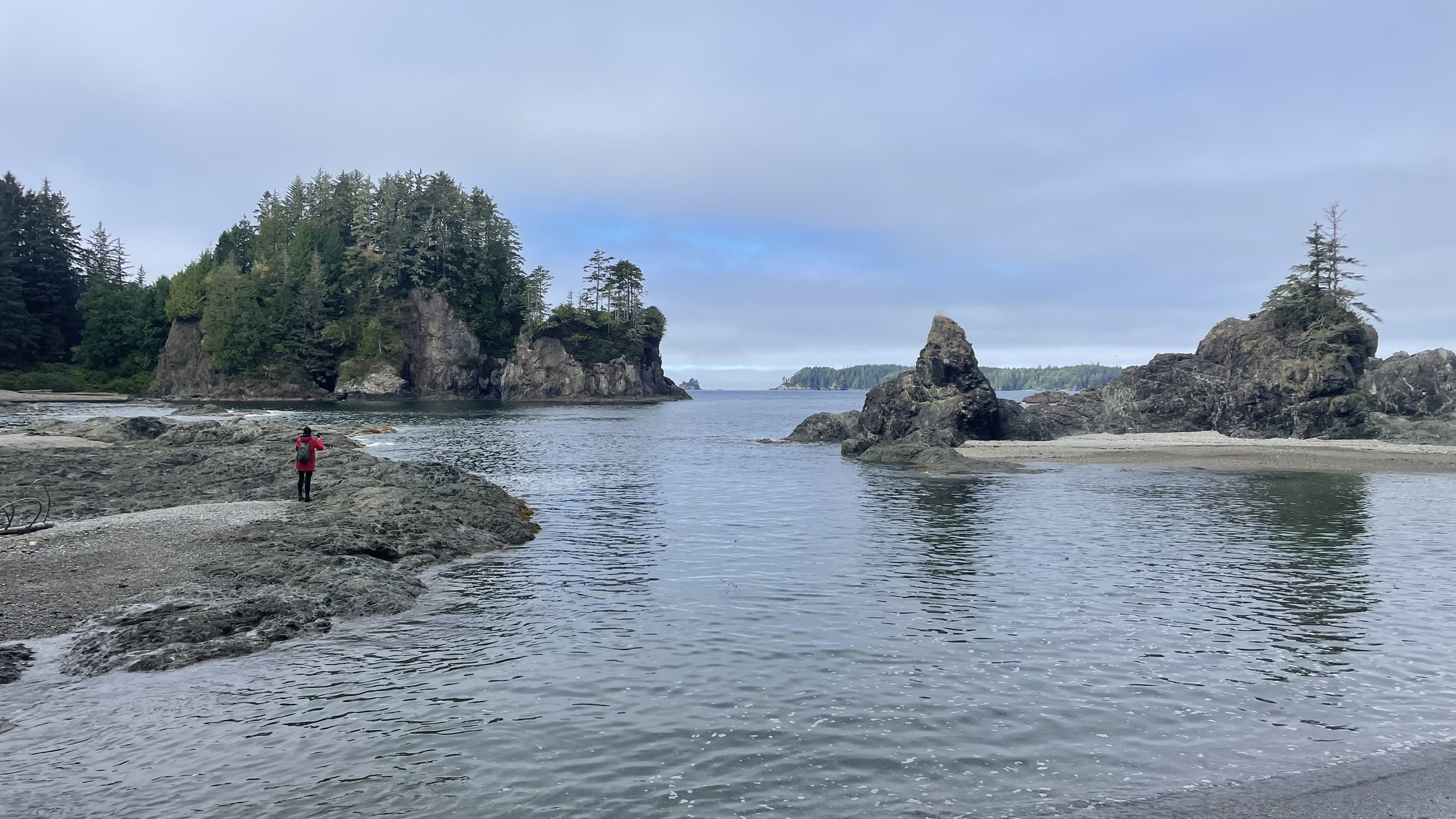
In recent years, there has been an embrace of Indigenous-led conservation as both a recognition of Indigenous Rights and sovereignty, and a critical strategy for protecting imperiled lands and waters in the face of escalating climate change. But for Indigenous nations, protecting the land, water and sky is indistinguishable from protecting language, culture and knowledge.
When an old-growth tree is felled, or oil spilled into the ocean, many people will recognize this as a profound loss of something ancient and irreplaceable: a wounding of the world. But the unobstructed night sky is a similarly precious natural resource, one we’re losing a little more of each year, and with it the opportunity to learn the teachings and stories woven into the stars.
Dark sky conservation is still a relatively new concept. The first dark sky preserve in Canada, Torrance Barrens near Muskoka, Ont., was established in 1999 — only the second such site in the world, according to Bob King, chair of the light-pollution abatement committee for the Royal Astronomical Society of Canada. There are now 22 across the country.
To receive a designation as a dark sky area, it’s not enough to just be incidentally dark. The astronomical society has three levels of designation: dark sky preserves, which have no artificial lighting within their borders, as well as urban star parks and nocturnal preserves, which must adhere to strict light-limiting measures.
“A dark sky preserve not only protects the nocturnal environment, it also provides a place for amateur astronomers to go and observe the dark skies,” King explains. In comparison, Canada’s three nocturnal preserves are focused on benefits to wildlife — like frogs, who sing at night to attract potential mates — not stargazers.
“And if you want to go a bit brighter, we have an urban star park,” King says. There are just two of these parks, bookending the western and eastern edges of Canada: Cattle Point in Victoria and Irving Nature Park, just south of Saint John, N.B.
The astronomical society fields a handful of inquiries about setting up new preserves and parks each year. The process of getting a designation is lengthy, Roland Dechesne, also a member of the light pollution abatement committee, says. After a community’s application is reviewed, the site is assessed for current artificial lighting, as well as any development plans in nearby communities that could make things brighter.
“There has to be a visitor experience plan in place — how are we going to educate them about responsible lighting and the nocturnal environment?” Compliance may involve retrofitting or replacing lighting, Dechesne adds.
All of this takes time, typically a few years or more. If Huu-ay-aht pursues a designation, they could be the first Indigenous nation to achieve it. Piyush Pushkarna, director of economic development for Huu-ay-aht, says Huu-ay-aht’s process would involve additional steps — for instance, determining what lands would be part of the protected area.
“To identify those lands, it has to go to the lands committee, to the ḥaw̓iiḥ council [of Hereditary Chiefs], so there’s a lot of work to do,” he says. “But it will happen. We’re positive.”
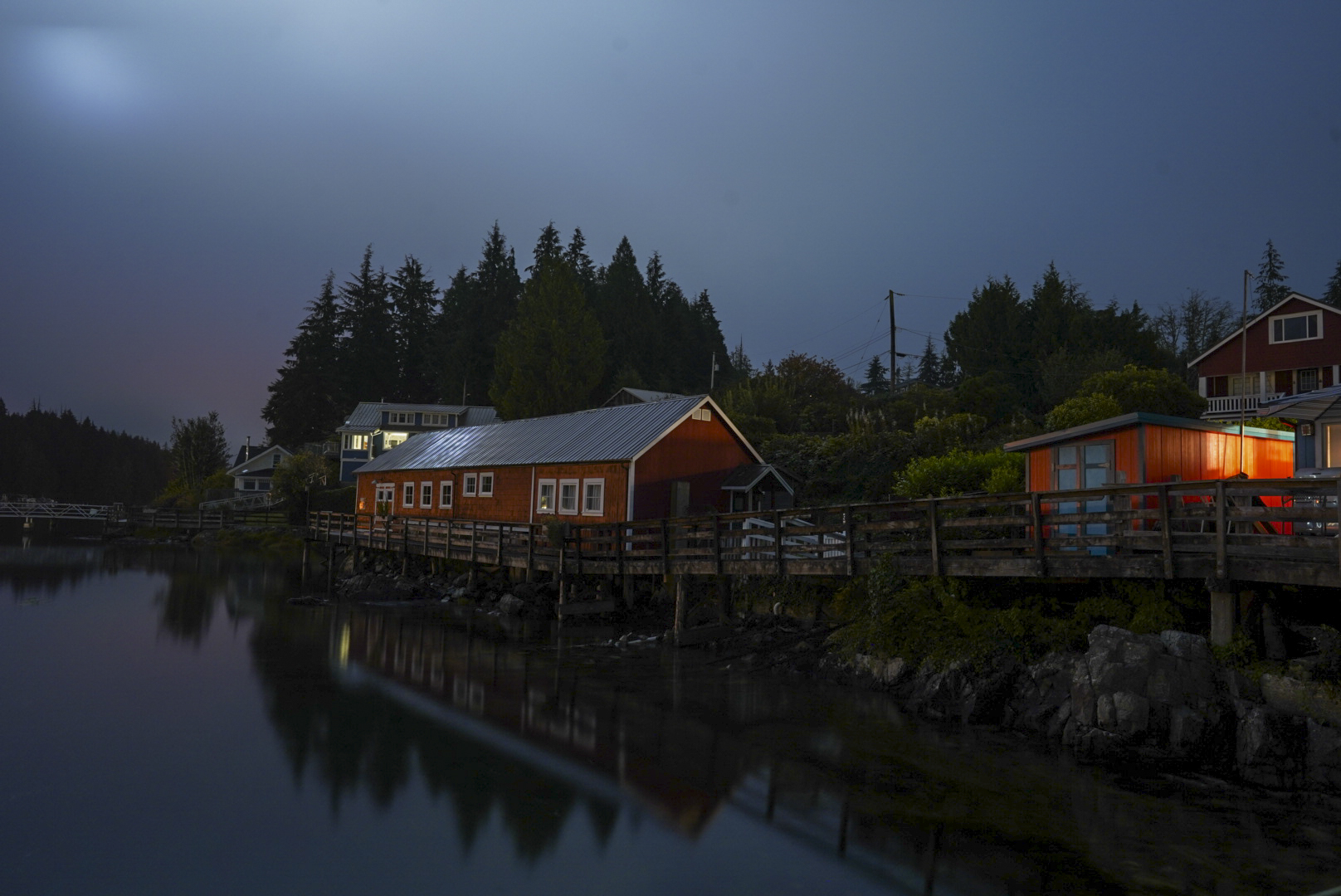
King and Dechesne have been involved in the astronomical society since 1977, when astronomers were just beginning to sound the alarm about light pollution. The rate of change has accelerated in last 10 or 15 years with the widespread adoption of light-emitting diodes, or LEDs. The bulbs are cheaper, longer-lasting and more energy-efficient than their predecessors but also brighter: our eyes are more sensitive to the cold blue light they emit, compared to the warmer tones of halogen lights.
“They’re perceived to be environmentally benign and very efficient,” Dechesne says. “So there’s no harm in adding two or three more, or using brighter LEDs, or adding them to your home as decorations. But what we’re trying to show is that, in fact, they’re not benign.”
Light pollution has extensive ecological impacts, particularly on nocturnal creatures, who exhibit changes to their hunting, mating and migration patterns in response to artificial light. Confused songbirds sing at the wrong time, breeding too early in the year for their hatchlings to survive. Disoriented baby sea turtles can’t find the ocean. Bats, already threatened across most of North America, are driven out of their habitat by the scourge of artificial lighting. Insects, fish and even plants are affected. So are humans: artificial light at night has been found to negatively impact sleep, worsen mood disorders and even elevate breast cancer risk.
Despite these extensive drawbacks, many people believe lighting at night offers worthwhile benefits for public safety — though a U.K. research study did not find reduced street lighting led to an increase in crime or traffic accidents.
“We’ve cultivated a story, especially in western cultures, that light equals safe,” Niki Wilson, a science journalist and host of the Jasper Dark Sky Festival, says. “And I suppose there might be instances where that’s true — lighting a busy intersection, you know, on a rural highway or something like that. But a lot of those perceptions aren’t really grounded in what we’re seeing in terms of science.”
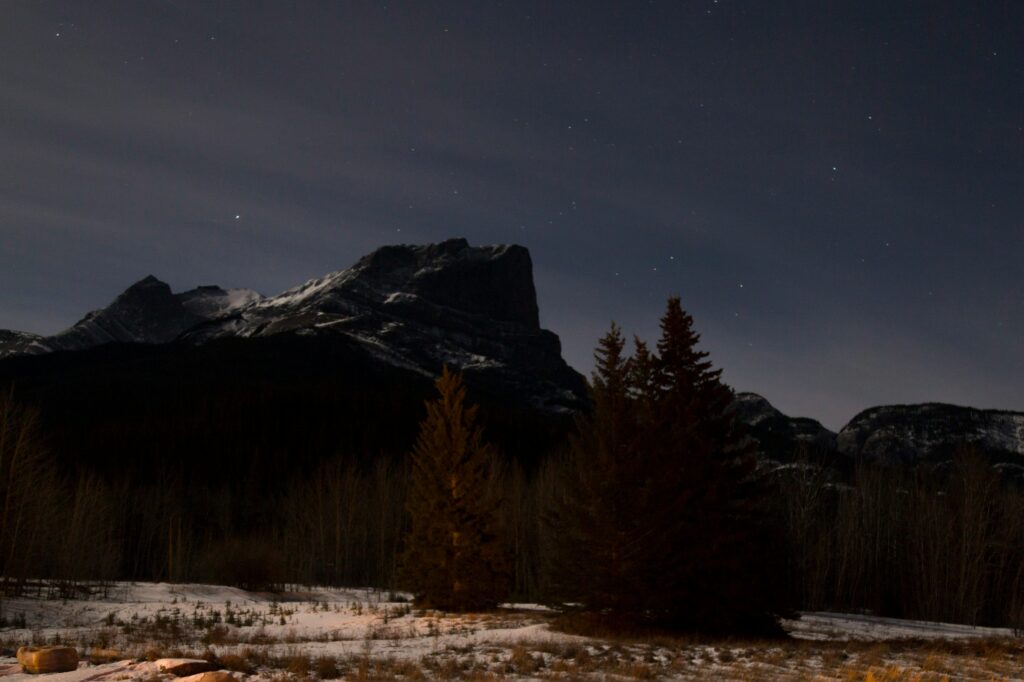
Wilson grew up in the town of Jasper, Alta., located within the national park. “You don’t have to go far off the beaten track here to find yourself in complete darkness,” she says. Also designated as the second-largest dark sky preserve in Canada, Jasper National Park has been hosting a dark sky festival since 2011. Wilson’s been a part of it for the last decade, but she’s been mesmerized by the stars for much longer.
“You only have to stand near someone who is looking into a deep-space telescope for the first time to understand what a deeper connection with the cosmos does for people,” she says. “In a world that’s very polarized, you see people coming from all walks of life to share in the wonder, and to connect with something bigger than themselves.”
Wilson also happens to be a family friend of Schmidt’s, and when Huu-ay-aht started exploring the possibility of putting together a dark sky festival of their own, he asked her to help.
For Wilson, dark sky festivals offer visitors a unique opportunity to connect to the cosmos, and spark their desire to conserve it. “I think it’s hard to ask people to protect something they have no relationship to,” she says. “But by coming to places like Jasper or Bamfield, and cultivating your relationship to the sky, and giving people these hopeful messages — that’s something they can get behind.”
The entrance to the House of Huu-ay-aht is flanked by carvings of their first ancestors, who welcome visitors inside. Majestic white Sitka spruce beams, more than 42 metres long, hold up the roof of the longhouse. Slightly more humble basketball hoops adorn the walls. Like many First Nations gathering places, it serves multiple functions.
Today, it is hosting a language lesson by Hinatinyis, a Huu-ay-aht member and Nuu-chah-nulth language warrior. Nuu-chah-nulth is carried by a small but growing number of fluent speakers, Hinatinyis among them. She was given her name by her grandmother; it’s pronounced high-nah-tin-ee-ous, and means “she is always welcoming.”
The word for star in the Nuu-chah-nulth language is t̓at̓uus, Hinatinyis says. Tat-oose. The second t is emphasized — what linguists would call an aspirated consonant, accompanied by a little puff of air. The Nuu-chah-nulth dialect spoken in Barkley Sound has lots of deep “h” sounds, which sound like a breath fogging glass. Short and long vowels give the language its rhythms, like water rushing over rocks, or oars propelling a boat through the oceanic highway, under the starlight of a heavenly atlas.
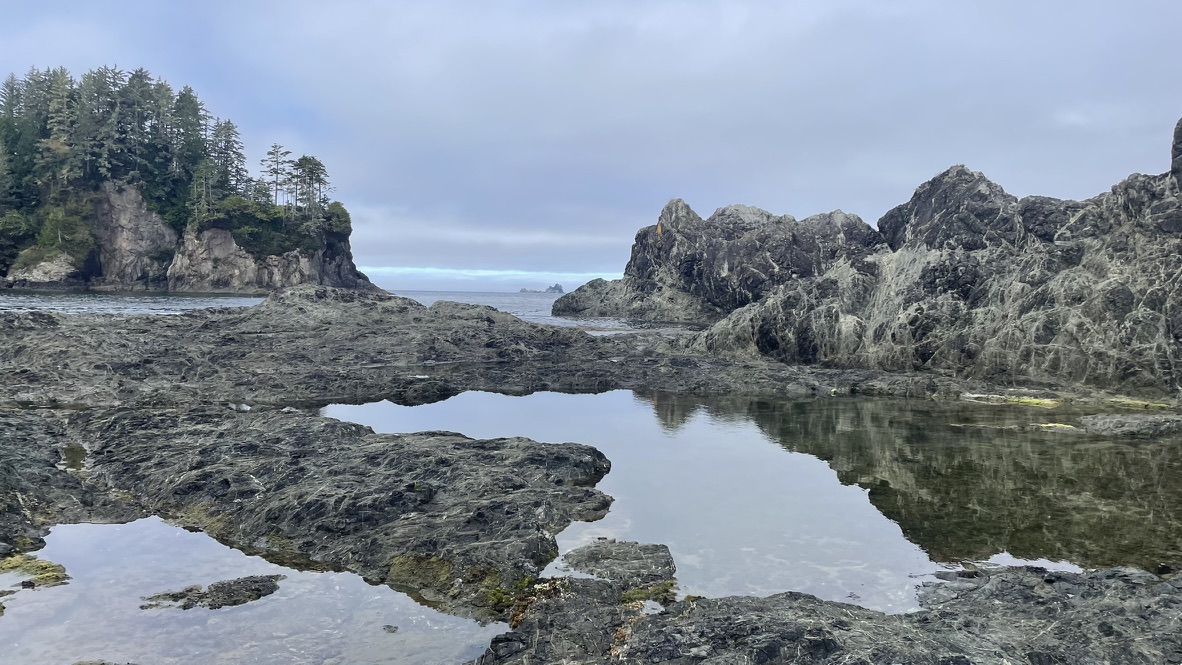
Artificial lighting is not an oil spill or a felled tree. Unlike other forms of environmental devastation, we can undo much of it with the flick of a switch. It might not be so simple as that, but it’s possible to restore some of what we’ve lost, and protect what we still have.
A sacred value of Huu-ay-aht is hišuk ma c’awak, which means that everything is connected. As Qiic Qiica says, “We’re all one and the same under the stars.” It’s easy to forget the interconnectedness of the world until it’s right in front of us: the trees nourished by ancient house poles, the fog swallowing the land, the artificial lights blotting out the stars. On that morning in Bamfield, the horizon was swaddled by clouds, a soft grey blur obscuring the point where the sea ended and the sky began.
Get the inside scoop on The Narwhal’s environment and climate reporting by signing up for our free newsletter. On a warm September evening nearly 15...
Continue reading
Between a fresh take on engagement and our new life on video, our team is...

The public has a few days left to comment on Doug Ford’s omnibus development bill....

115 billion litres, 70 years to fix, $5.5 billion in lawsuits
